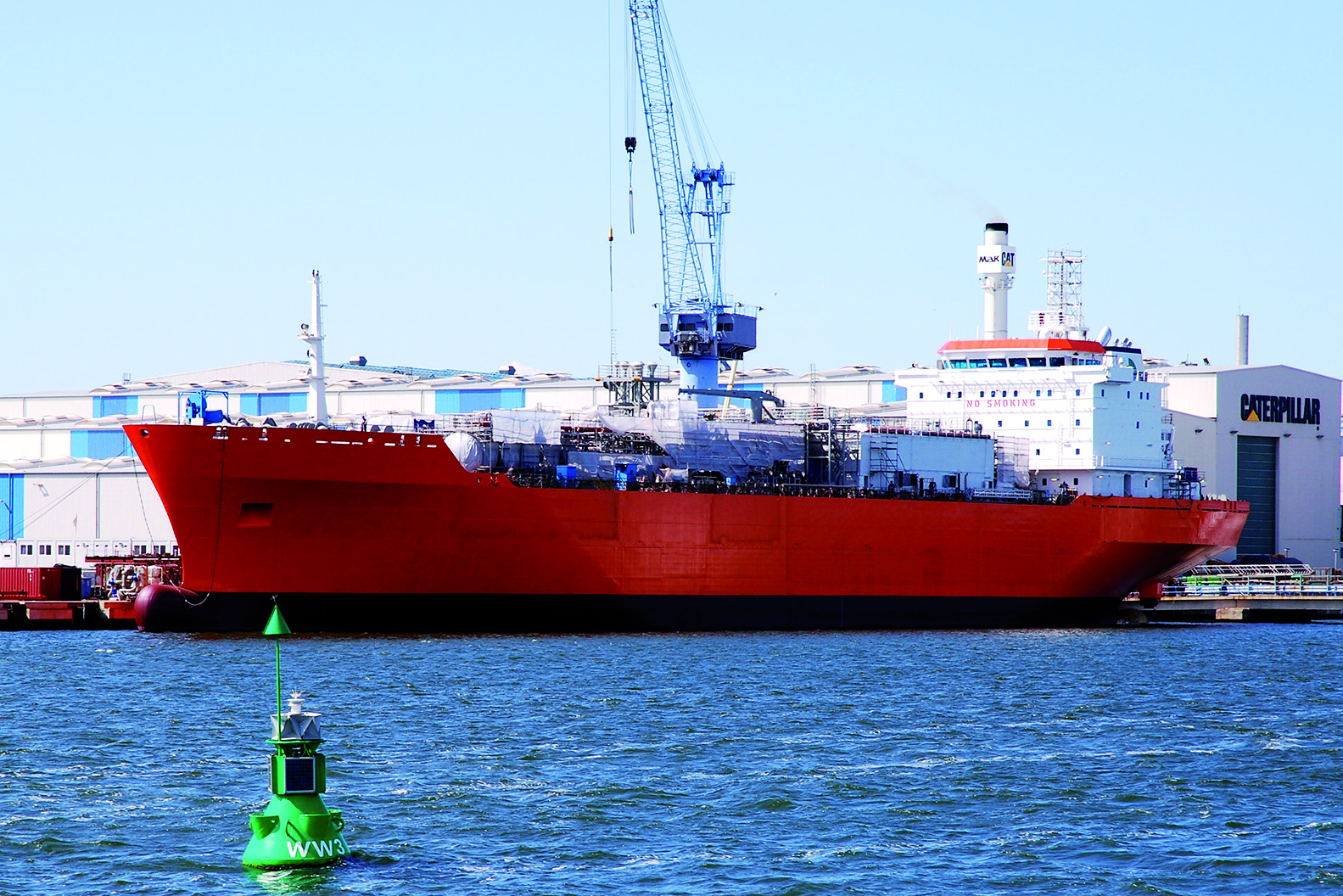

Dual-fuel LNG tanker CORAL ENERGY
According to HANSA International Maritime Journal – 02/2013
Delivered in 2013, the 15,600m3 capacity LNG carrier CORAL ENERGY is the first gas-fuelled ship with mechanical drive to the propeller – previous such installations have all been part of a diesel-electric plant. The ship design has been taken from the eight identical LEG tankers built by Meyer Werft between 2007 and 2010, modified to meet all ice class requirements. And of course, design and construction of the cargo tanks led to a new experience at the Neptun Werft.
The propulsion and machinery and the onboard gas plant are state of the art. The direct mechanical drive via gearbox and controllable pitch propeller is the first application of a medium-speed dual-fuel engine on board a new vessel. To date only Wärtsilä is able to offer dual-fuel engines in the power range between about 1000 and 17,500kW. Thus for both main propulsion and generator drive, Wärtsilä engines had been chosen. The eight-cylinder main engine of the 50DF series has an output of 7800kW at a speed of 514rpm. The best specific fuel consumption in the gas mode is 7300 kJ/kWh and the amount of pilot diesel oil at MCR only 2.4 g/kWh.
There are two six-cylinder auxiliary engines of the 20DF series with an output of 1056kW each driving the generators. The pilot fuel consumption of these engines is with only 1.0 g/kWh at full load even better than that of the main engine. With the power of 7800 kW the vessel reaches a maximal service speed of 15.8 kn at maximal 4 Bft in gas and diesel mode. To avoid or at least minimize the problems of engine knocking in the Otto mode during acceleration of the vessel she is equipped with a CP propeller type Wärtsilä 4E 1415 D with a diameter of 5400 mm. The engine torque is transmitted to the propeller via a gearbox from Renk. The bow thruster installed was supplied by Verhaar type OFP 1800 with a power input of 850 kW.
Equipment and accommodation
The vessel is equipped with two hydraulically driven windlasses from Rolls-Royce and 4200kg self-balancing anchors. The mooring equipment was as well supplied by Rolls-Royce. There are seven hydraulically driven winches, all with two drums. The hose handling crane has a heeling force of 5t at an outreach of 18.5m and the provision crane of 4t at 8.3m. The lifeboat is of the free-fall type with a capacity for 30 persons. In addition, there is a rescue boat for six persons. The total of 25 cabins with 26 berths is divided in two captain class cabins, six officer class cabins, 15 crew class cabins, one double berth class cabin and one owner respectively pilot class cabin.
Cargo tanks and pumps
The total cargo capacity of CORAL ENERGY of 15,600 m3 is split into three independent type C horizontal bi-lobe tanks below deck. The maximal tank pressure is 4.20 bar and the minimal temperature -163°C. The walls of the tanks are made of a special shipbuilding nickel steel with a nickel content of 9%. This is a steel alloy with high low-temperature toughness known as NV 9Ni. The tanks including the necessary insulation have been built at the yard in Rostock. Depending on the efficiency of insulation, the surface area as well as the outer temperature, the boil-off rate is in the range between 0.1 and 0.15% of maximal filling per day on large carriers, according to TGE Marine in Bonn. Small tankers have a .bad surface to volume ratio resulting in high boil-off rates in the order of 0.2 to 0.6% per day. This is the reason why such vessels should be equipped with Otto gas engines or dual-fuel engines for both propulsion and power generation. The gas equipment for loading and unloading as well as the handling equipment for boil-off gas and the fuel gas supply system has been developed by TGE. There are six cargo pumps type Wärtsilä Hamworthy Deepwell with a feed rate of 270 m3/h LNG with a maximal specific weight of 0.50 t/m3 at -163°C. Thus, the maximum loading rate with vapor return line is 1620 m3/h. Loading without vapor return line is impossible. The maximal discharge rate is the same. For fuel gas supply there is a vaporizer to heat up the gas. The inert gas plant is of a membrane type with a capacity of 80 Nm3/h with a composition of 97 volume % N2 and a minimal temperature of -40°C.
Length overall:154.95m, Length bp:146.67m Breadth moulded 22.70m, Depth moulded: 14.95m, Summer draught: 8.45m, Deadweight: 12,259dwt, Gross tonnage: 13,500, Service speed: 15.8kn.
